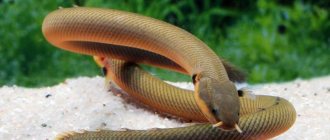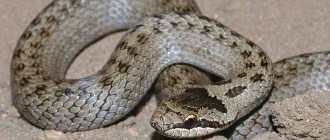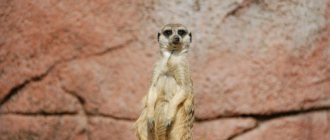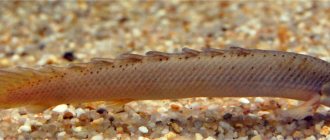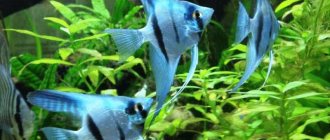- Wild animals
- >>
- Reptiles
The milk snake looks very impressive and extravagant. The brightness of its colors is simply mesmerizing. No wonder it is considered one of the most beautiful snakes in the whole world. This snake is incredibly popular among terrarium enthusiasts, because it is unpretentious in its maintenance, but is very elegant in appearance and can become a decoration for any terrarium. Let's figure out whether this reptile is dangerous, is its temperament aggressive, and why does it have such a noticeable and rich coloring?
Origin of the species and description
Photo: Milk snake
The milk snake is also called the kingsnake or striated kingsnake. This reptile is non-venomous and belongs to the colubrid family. It would seem that her entire attractive appearance screams that she is very dangerous and poisonous, but this is just a clever deception, which is the clearest example of mimicry.
Interesting fact: The harmless milk snake cleverly imitates the poisonous and dangerous coral adder; in appearance they are strikingly similar, although they belong to completely different families. Apparently, the colubrid reptile uses this feature for self-defense.
There are 8 varieties of milk (king) snakes and a large number of subspecies, differing in their original and bright colors.
Different species and subspecies of milk snakes have amazing, unusual, rich colors:
- red;
- orange;
- white;
- blue;
- yellow;
- pink.
Because of their fashionable and attractive outfit, milk snakes look like real masterpieces, pleasing the eye and uplifting the mood. Only one intriguing question arises: “Why is this reptile called milk?” The explanation for this is quite interesting.
Video: Milk snake
In those territories where king snakes settled, cows began to lose milk. Farmers have suggested that someone is absorbing it directly from the udder. Having noticed this bright reptile in the pastures, they considered it to be the culprit in the loss of milk, although no direct evidence of this was found. So they called this milk snake.
Interesting fact: Many people believe that the king snake really loves milk, but this is not true. Of course, if you deprive a reptile of water, it can also drink milk, but this product will only upset its stomach.
Precautionary measures
In most cases, non-venomous reptile species are kept at home.
Poisonous specimens have very special species-specific habits and behavior, so when keeping them at home you need to adhere to certain rules:
- placement in strong and reliable, closed terrariums or cages, which are located in closed rooms;
- the holding room must be completely isolated, without ventilation or other openings;
- tools for working with a snake, as well as serum, must be in close proximity to the terrarium;
- if there are a large number of snakes, each terrarium must be marked with special signs indicating the species.
Among other things, it is strictly forbidden to handle poisonous snakes with bare hands, or to work with snakes while drunk or under the influence of drugs. Inexperienced people should not be involved in caring for venomous snakes.
Appearance and features
Photo: King Milk Snake
The length of a dairy reptile can reach up to one and a half meters, but more often they are found half a meter in size. As already mentioned, the main feature of their external data is the extravagant rich color scheme. It may differ in different subspecies, but red, white, yellow, and black colors predominate. Let's look at the external characteristics of milk snakes, describing some of the most famous varieties.
The beautiful king snake reaches a length of one meter. The reptile's head is slightly compressed at the sides, so it has an oblong shape, with large snake eyes clearly visible on it. The body of the snake is massive and slender, has a fawn or brownish tint, the overall tone is decorated with reddish-brown rectangular spots.
The Arizona kingsnake grows no more than a meter in length. Its black head is slightly rounded, and on its miniature slender body there is an elegant pattern, which is a combination of red, black, yellow or white stripes. The mountain kingsnake is slightly larger than the previous ones, having a length of one and a half meters. The reptile's body is powerful and strong, and its triangle-shaped head can be black, dark gray or steel in color. The pattern on the body of this snake has a gray-orange color scheme.
The Mexican king snake is perhaps the largest of all those described. Her two-meter torso looks very slender, but strong and powerful. The head is elongated, because compresses from the sides. The main tone of the body is reddish-brownish, and the pattern on it is red and black and yellow, in the form of stripes. Of course, there are other species of king or milk snakes that have been well studied. All of them are distinguished by their extraordinary and eye-catching color, so many people want to have such charming and harmless pets in their terrarium.
Hygiene measures
Reptiles are susceptible to various types of infections. Snakes themselves carry the salmonella bacterium, which poses a danger to humans. Therefore, the terrarium must be kept clean. Waste is removed regularly, while the substrate is changed in fragments. The water in the bathing container is changed immediately after excrement or food debris appears in it.
Once a month, cleaning is carried out with a complete replacement of the substrate. The terrarium, all surfaces and decorative items are washed and treated with safe disinfectants. At this time, the snake is moved to another, well-closed box. Cleaning is carried out during the day, the terrarium must warm up before the lighting and heating are turned off at night
Where does the milk snake live?
Photo: Sinaloya milk snake
The distribution area of milk snakes is quite extensive, it occupies about six thousand square kilometers. Most often, these snake representatives have permanent residence in the vastness of Canada, the USA and South America.
The area of their settlement occupies the following territories:
- Mexico;
- Texas;
- Florida;
- Arizona;
- Nevada;
- Alabama;
- Quebec;
- Colombia;
- Venezuela;
- Ecuador.
Milk snakes inhabit various landscapes, they can be found in mountain ranges (at a low altitude of about 350 meters, although some live much higher), they also inhabit forest thickets, wetlands, deserts and prairies. For their residence, snakes choose rocky crevices, depressions under boulders, fallen rotten trees, all of which serve as reliable and secluded shelters for them during the daytime, because they begin to be active at dusk, when they go hunting.
Milk snakes prefer coniferous forests and are found in coastal marine areas. They endure intense heat with difficulty, so they leave their lair only at night, preferring land movement. So, the royal (milk) colubrid snake can be confidently called a typical American, because it has lived in both North, Central, and South America.
Now we know where the milk snake lives. Let's take a look at what king snakes are fed.
Conditions of detention
Keeping a Sinaloyan milk snake in captivity is not a very difficult task. It is not difficult to comply with a small list of requirements. Therefore, this species is recommended for beginners. However, there is a “but” here: the Sinaloyan milk snake is able to get out of the terrarium if there is a hole where its head can fit. If there is such a hole in the terrarium, then she will definitely escape. This snake loves to explore space, and therefore after escaping it will be very difficult to find, since it can crawl far away quite quickly. The choice of terrarium must be approached with special care.
In addition, it is imperative to keep Sinaloyan milk snakes alone.
Terrarium: It is recommended to choose a terrarium for terrestrial species, i.e. horizontal type. The size of the terrarium should depend on the size of the lighting fixtures that will be placed in it, because... the lamp must be at a height of at least 40 cm from the floor. Thus, the size of the terrarium excluding the lamp should be at least 50x40x40 cm for one individual.
Substrate: river pebbles, coarse sand, coconut shavings, or paper can be used as the main substrate. The main thing is that the substrate is always dry, but not dusty. It is necessary to place sphagnum moss at the heating point so that the snake can burrow into it. In addition, sphagnum moss will help maintain the moisture level necessary for the reptile.
Lighting: During the reptile's active seasons, daylight hours should be 12 hours. Compliance with the daily rhythm is very important for the snake, since the time of its activity falls precisely on the period of twilight. The presence of a lamp with a UVB spectrum in the terrarium is a prerequisite.
In order for a snake to feel comfortable in captivity, it must be hibernated in winter and brought out closer to spring. To do this, at the end of autumn - beginning of winter, for 2-3 weeks, daylight hours are gradually reduced and night temperatures are reduced. When there are 8 hours of daylight, the snake needs to stop offering food and turn off the night heating. When daylight hours are reduced to 4 hours, it is necessary to turn off the daytime heating, and the temperature should be maintained at 15-17°C. At this time, the snake should be placed in a dark, dry and well-ventilated place. This could be a light-proof cage with sawdust. However, humidity must be maintained at 40-50%, and a drinking bowl must be provided regularly. Wintering lasts about 2 months, after which the snake must be brought out of hibernation at the same rhythm. Food should be offered when there is 8 hours of daylight.
Content temperature: during the daytime, the background temperature in the terrarium should be maintained at 28-30°C, at night the temperature should drop to 20-21°C. An excellent option would be to gradate temperatures in the terrarium so that the reptile itself can choose a comfortable place. To do this, it is enough to organize a warming up point where the temperature reaches 30-32°C during the day (moss should be placed in the same place). But don't forget to hang a thermometer on the other side of the terrarium as well to monitor the background temperature.
Maintaining Humidity: A large and heavy (so that it cannot be knocked over) water bowl, in which the snake can not only drink, but if necessary, dive (especially during molting) and defecate, will also be an excellent source of evaporation to maintain humidity. The water in the drinking bowl needs to be changed daily. In addition, sphagnum moss and daily spraying with warm water will perform the same role.
Decoration: two thirds of the space in the terrarium can be left free, the rest must be filled with all kinds of shelters. This can include shelters in the form of rocks, grottoes, stumps, as well as pieces of tree bark and even parts of broken clay pots. Three walls of the terrarium must be covered with decoration, especially if the terrarium is located in a public place.
What does a milk snake eat?
Photo: Honduran milk snake
The milk snake's menu, for the most part, consists of all kinds of rodents (rats and mice). She goes hunting at dusk. They eat reptiles and various lizards, birds, nesting low from the ground or directly on it. Some subspecies of king snakes eat only lizards, making them difficult to keep in terrariums.
The milk snake will not disdain such a snack as an ordinary frog. They eat royal reptiles and other snakes, even very poisonous ones, because... their body is designed in such a way that it does not perceive the poisonous toxin of its own snake relatives, so they absorb other reptiles with great pleasure and without much fear.
Interesting fact: There are well-known and recorded cases where king (milk) snakes successfully absorbed extremely poisonous rattlesnake reptiles.
It has been noticed that the hunting process itself, and then the pursuit of potential prey, brings great pleasure to milk snakes. They spend their time with rapture, tracking down their prey for hours. These reptiles are not prone to overeating; one swallowed victim is enough for them for a couple of days.
The diet of snakes kept in captivity consists of rat pups, hamsters, mice, chickens, and lizards. Typically, over a one-week period, the reptile absorbs no more than three food items. After a meal, it is better not to disturb the crawling animal for three days so that it does not regurgitate what it has eaten. During the eating process, it is also better not to disturb the snake person.
Interesting fact: Mature milk snakes are characterized by such an unpleasant phenomenon as cannibalism.
Behavior
The reptile is nocturnal. During the day it rests in an underground shelter or under a pile of stones, and at dusk it crawls out in search of food. From autumn to spring, activity can occur during daylight hours among animals kept in the terrarium.
The Campbell's king snake lives alone and avoids its fellows outside the breeding season.
Large individuals are prone to cannibalism and eat smaller relatives. They usually treat humans without aggression. With careful and friendly handling, reptiles quickly become tamed and become tame. The snake swims well and likes to stay in water for a long time if there is a small body of water near its home.
Under natural conditions, it goes into hibernation from mid-November to the second half of February, when the ambient temperature drops to 10°C. Already in October, she stops feeding, limiting herself to drinking water. Hibernation begins after the stomach is completely empty. The diet consists of rodents, hatchlings, frogs, lizards and small snakes.
Features of character and lifestyle
Photo: Milk snake
The milk reptile is not poisonous, but it itself is not afraid of poisonous snakes, because its body is immune to their dangerous toxins. The reptile begins to be active at dusk. She cannot stand extreme heat, so she hides in her shelters, hiding from the scorching heat. For humans, this creeping creature is completely safe, and is only an object of admiration, thanks to its flashy festive attire.
People have noticed that the milk snake often visits farmsteads; it climbs into barns to hunt rodents, which is very scary for livestock. Perhaps the cows lose milk out of fear, and people blame the snake for sucking it right out of the udder.
If we talk about the character of these beautiful snakes, terrariumists assure that they are very peaceful, safe and very curious. Reptiles quickly get used to it and have excellent contact with humans. They do not like to be held tightly, restricting their movements, and are disturbed after a meal. Reptiles are not very demanding when it comes to keeping them, and even novice snake lovers can cope with this task.
It is necessary to take into account the fact that they eat their own kind, so you need to keep snakes one by one, and during the mating season, carefully monitor the snake pair. No attacks of aggression towards humans were observed among milk snakes.
Is the bite dangerous for humans?
According to statistics, of all recorded snake attacks, coral adder bites account for only 1%. In this case, attacks are the result of emergency circumstances due to accidental contact between a person and a reptile.
If an angry snake grabs the body of its victim, even timely medical assistance will be powerless - in most cases, the victim’s cardiac arrest is recorded over the next 12–24 hours. Then the clinical signs of severe intoxication develop very quickly and are difficult to treat.
Find out what to do if you are bitten by a snake.
However, there are cases when a reptile leaves a barely noticeable jaw wound after its bite. Then the victim experiences only paralytic and local symptoms of poison entering the blood. When you see a small scratch from a snake's jaws, you should not deceive yourself that there is no threat to your health.
The first signs of the effects of snake toxins on the body will appear within 5–10 minutes in the form of:
- pain at the site of the bite (may be absent);
- nausea;
- repeated severe vomiting (always present, sometimes blood may be observed in the vomit);
- prolonged wound bleeding;
- severe headache;
- proteinuria (increased content of protein substances in the urine);
- cardiovascular failure;
- paralysis
Did you know? In the Middle Ages, Europeans executed criminals by throwing them into a snake-infested pit. As a result, the punished person died in agony from numerous reptile bites.
However, among all the diversity of coral adders, there are non-poisonous species that mimic their poisonous counterparts.
Among these, zoologists distinguish:
- Micrurus fulvius;
- Micrurus tener;
- Micruroides euryxanthus.
Social structure and reproduction
Photo: King snake
Milk snakes become sexually mature when they reach three years of age, sometimes a little earlier. Their wedding season begins in spring. These reptiles are oviparous, so already in the summer the female is preparing to lay eggs. To do this, she looks for a hidden and reliable place. The main condition for it is dryness. The masonry is built in fallen trees, under dry leaves, and in sandy soil.
The number of eggs laid can be up to 16, but usually there are from 6 to 9. After about a couple of months, the baby snakes begin to hatch. From birth they are very independent, resourceful and completely similar in color to their parents. The body length of babies reaches 19 cm.
Fun fact: Milk snakes continue to grow throughout their lives.
The menu of newly born snakes is identical to the diet of mature individuals, only they choose prey of much smaller dimensions, happily eating chicks of small birds, newborn mice, and small snails. In a terrarium, milk snakes can also reproduce well, but young animals must be kept separate from mature reptiles, not forgetting about their manifestations of cannibalism.
In natural conditions, the lifespan of a milk snake rarely exceeds fifteen years; usually reptiles do not reach ten. In captivity, they can live for twenty years, because the environment is favorable and there are no dangerous factors.
Main characteristics
The exotic pet snake is attractive because it is cold-blooded and calm. In nature, there are often species of reptiles that are not only completely unpretentious in keeping, but also quite easily tamed.
The entire body of a snake, regardless of the species, is covered with dry, scaly skin. Some have a special type of skin on the abdomen, which facilitates the process of moving the snake not only on loose soil, but also on a glass surface. Periodically, snakes change their epidermis (skin).
The eyes of all snakes are always covered with eyelids, which have the structure of special transparent scales. Because of these scales, it seems that the snake sleeps with its eyes open, but now we know that this is not so.
Quite often there are snake individuals whose body has a specific pattern, namely wide “ordinary” stripes. In addition to the pattern, the distinctive feature of snakes is that Mother Nature has endowed them with very developed organs that are very sensitive and respond well to heat. The thermal sensitivity organs of all snakes are located between the nose and eyes of the reptile. But the boa constrictor, python and viper, among other things, are also endowed with sensitive receptors that are located in the grooves of the head.
Natural enemies of milk snakes
Photo: White milk snake
Although the king (milk) snake is not considered dangerous, it has a very weak poison (like the copperhead), which does not pose any threat to humans, does not affect large animals either, and can have a slight paralyzing effect on small rodents and reptiles, which reptile and eats. This elegant snake-like creature has many ill-wishers in nature who are not averse to snacking on the creeping snake.
Among them are:
- storks;
- heron;
- eagles;
- secretary birds;
- crocodiles;
- jaguars;
- mongooses;
- wild boars;
- leopards;
- meerkats.
It is not for nothing that the milk reptile is painted in such a striking color; nature came up with all this for the purpose of its self-defense, because the bright color is considered a warning, it symbolizes toxicity and danger. This phenomenon is called mimicry, i.e. by imitation. In this case, the non-venomous king snake imitates the most dangerous coral adder.
Their colors are very similar, only the adder does not have white stripes on its body (they are always yellow). The Mexican variety of the royal reptile has exactly the same color scheme as the coral adder, its stripes are exactly yellow, so only an experienced herpetologist can distinguish these reptiles from each other. Many animals do not take risks and avoid the milk snake, considering it dangerous and extremely poisonous.
Interesting fact: The Americans even composed a poem (a nursery rhyme) about the similarity between the coral adder and the milk snake. Here is its approximate translation: “Red and yellow - and you are suddenly killed, Red and black - Jack has a friend!”
Nutrition
Cobras feed on small rodents, birds (passerines and ground-nesting birds, for example, nightjars), lizards, frogs, toads, smaller snakes, and eggs. The king cobra feeds exclusively on reptiles, and eats lizards extremely rarely, and more often hunts other snakes. Its victims are usually the most poisonous species and the closest relatives of cobras - kraits and asps. Cobras kill their prey with a bite, injecting strong poison into its body. Interestingly, cobras often sink their teeth into the victim and do not immediately release it, as if chewing, thereby ensuring the most effective introduction of the toxin.
King cobra venom
King cobras are able to regulate the flow of venom during an attack by closing the ducts of the poisonous glands through muscle contractions. The amount of poison consumed depends on the size of the victim and is usually almost an order of magnitude higher than the lethal dose. The neurotoxin of its venom does not affect the snake itself, and it does not get poisoned when eating a victim it has poisoned. Most often, in an attempt to scare away a person, the snake makes “idle” bites, without injecting any poison at all.
Apparently, this is due to the fact that the cobra needs venom primarily for hunting, and accidental or unnecessary loss of venom is undesirable. King cobra venom is primarily neurotoxic. The venom toxin blocks muscle contractions, which causes paralysis of the respiratory muscles, respiratory arrest and death.
Its strength and volume (up to 7 ml) are enough to cause the death of a person within 15 minutes after the first full bite. In such cases, the probability of death may exceed 75%. But, taking into account all the behavioral features of the king cobra, in general, only 10% of bites become fatal to humans. However, there have been cases where even Indian elephants have died three to four hours after a king cobra bite if the bite was inflicted on the end of the trunk or on the fingers (the only parts of an elephant’s body that are vulnerable to snake bites. In India, cases of death from a king cobra bite are rare, with that every year up to 50 thousand people die from poisonous snake bites in the country.
How does an ordinary person defend himself?
As mentioned earlier and as everyone knows, the common one is not poisonous. How then does this snake defend itself and how does it behave in moments of danger? It is better not to try to pick up a wild snake, but a domestic one does not protest against such an action only on the part of its owner, to whom he is accustomed
If this creature with ears on its head does not like human attention, it will behave like poisonous snakes. When the menacing hissing and head thrusts do not help scare off the enemy, he uses his signature trick, releasing a liquid from the intestines that has a very strong and unpleasant odor
After all the above actions, the offender should probably retreat, but if this does not happen, he will simply pretend to be dead. As for bites, this animal decides to take such a step in very rare cases.
Morphs
The animal has a variety of morphs. These include Californian, Mexican, Arizona, Honduran, Sinaloyan and others.
- The Mexican has wide scarlet transverse rings and contrasting colors.
- Honduran is distinguished by its bright colors. Characterized by alternating red, black, light yellow or white stripes.
- Sinaloya: alternating coral, black and white colors. The widest stripes are coral.
- The red-gray has two groups of morphs: blair (gray, black and orange) and alterna (gray with black stripes).
Feeding
It is recommended to use rodents to feed the Campbell's Milk Snake. Frozen mice, which are sold in pet stores, will do. It is better not to feed independently caught rodents, as they are carriers of infections and worms. An adult pet is fed no more than once every 7 days. The amount of food is determined depending on the size of the ward. An adult snake eats 3 mice at a time. The main thing is that the food items are proportional to the widest part of the snake. Young snakes should be given newborn mice once every 3-5 days (in the first months no more than one).
Refusal to eat
A pet may refuse food for the following reasons:
- Shedding. During this period, the snake is not offered food or picked up; the terrarium is additionally moistened and a humidifying chamber with sphagnum moss is placed. This moment can be determined by cloudy eyes, dull and pale skin, and restless behavior.
- Mating season. Occurs when the snake has reached sexual maturity, at which time it becomes more restless.
— Incorrect conditions of detention. This may be a low temperature for the snake, sudden changes in temperature, insufficient humidity or lack of oxygen.
- Stress. Change of habitat or even a new terrarium.
The snake may regurgitate food. This may be a consequence of very high or, conversely, low temperature in the terrarium.






